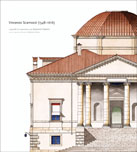LONG TERM PARKING Photographs by Giovanni Giaconi |
|
LONG TERM PARKING photographs by Giovanni Giaconi.
Specifications:
Publisher: dolp_dove osano le parole - Vicenza.
Language: Italian and English
Author: Giovanni Giaconi
130 pages, 110 four-color plates
10 x 8 in, 26 x 20 cm
ISBN 978-88-95685-02-1
Softcover binding
Publication date April 2009
Include: Introduction in Italian and English and the following sections: Fronts/Fronti, Interiors/Interni, Landscapes/Paesaggi, Wheels/Ruote, Twins/Gemelli, Grey Cover/Teli Grigi, Sides/Fiancate, Rears/Retri.
|
|
INTRODUCTION from the book.
These images of abandoned cars are not a comment on social decline. The cars themselves are a manifestation of the simple and carefree lifestyle that continues to thrive in Crete despite the onslaught of consumerism and material culture. On the island of Crete it is quite natural to simply abandon a car on the street or in a neighboring field when it is no longer of use. Here automobiles never became venerated possessions reflecting the status of their owners, but are treated as a simple convenience, a means to an end, and even a communal appliance. Still today many Cretan villages are hardly accessible by car and the roads between them are little more than narrow rocky trails. Cars seem to function here, well past their expected life span, and all sorts of home remedies are administered to keep them running.
Abandoned cars are integrated into the urban and rural environments. Once salvaged for parts, the skeletal frames can be decorated with potted plants, used for storage, or co-opted by stray dogs for shelter. Their once bright paint jobs fade in the sun and dust, and the vivid hues of the bygone days of automobile manufacturing speckle the arid summer landscape. Rather than inspiring a sense of emptiness or decay, they convey a precious freedom from materialism and a the joie de vivre of the island.
It is this freedom that Giaconi strives to capture in his photographs. These images of junked cars carry the viewer beyond the thing itself to expose the essence of the Cretan spirit, where the street is transformed into a theatre, and lives are performed against the back drop of one of the ancient cradles of western civilization.
All photographs taken in Crete between 2004 and 2008.
|
INTRODUZIONE dal libro.
Fotografare automobili abbandonate, non è la denuncia di un degrado sociale, bensì la manifestazione di uno stile di vita gioioso, semplice. E’ l’immagine dell’esistenza cretese, quotidiana, dove l’atto di abbandonare una automobile per strada è totalmente naturale; è l’icona di una libertà di pensiero e di rapporto con l’esterno. L’automobile non è considerata nella sua utilità velleitaria ma, semplicemente come mezzo che qualche volta serve e spesso no. Molti paesini sono “pedonali” e l’automobile viene utilizzata soltanto quando se ne ha un effettivo bisogno, per il resto del tempo essa viene lasciata per strada e diviene parte del paesaggio, del luogo cittadino o campestre. Viene usata come riparo per gli animali, cani in particolare e addirittura ornata con vasi da fiore, piante, come fosse una casa. E poi sono coloratissime, allegre, queste carcasse, nelle tonalità del verde, del rosso, dell’azzurro, del giallo. Insomma, non trasmettono certo una sensazione di triste abbandono, bensì un senso diverso dell'esistenza, una libertà vissuta, non pensata, non ideologizzata, la libertà di pensare con poesia, con creatività, di vivere con gioiosità, con semplicità.
E' questa libertà ad essere ritratta nelle foto raccolte da Giaconi, un’istantanea che va oltre la semplice immagine, che coglie lo spirito vero dell’esistenza cretese.
La strada è il teatro della vita, una scena aperta appunto, sullo scorrere lento, calmo dell’esistenza su quest’isola antichissima, cantata da Omero come l’isola dalle cento città, divisa come fu tra numerose poleis.
Tutte le foto hanno un’intensità d’assoluto nella loro naturalezza. Esse contengono una poesia di libertà, con un ritmo che si espande nei colori e nella dolcezza delle immagini.
Tutte le fotografie sono state scattate a Creta tra il 2004 e il 2008.
|
|
|
| |
|
|
|





